#PixelShift
Photo

Rhinoceros beetle 160MP photo shot with Fujifilm XH2 + XF30mm #fujifilm #fujifilmxindia #pixelshift #macrophotography #macrophoto #insectguru #arthropod_perfection #fujifilm_xseries #gulfuphotography #macroworld #radiantdiffuser #insect_perfection #ultramacro (at Kochi, India) https://www.instagram.com/p/Cp7sextSnL0/?igshid=NGJjMDIxMWI=
#fujifilm#fujifilmxindia#pixelshift#macrophotography#macrophoto#insectguru#arthropod_perfection#fujifilm_xseries#gulfuphotography#macroworld#radiantdiffuser#insect_perfection#ultramacro
5 notes
·
View notes
Text

#IFTTT#Flickr#canoneoselan7e#canonef28mmf28isusm#kodakektachromee100#fppe6kit#65minutes#38c#35mm#slide#film#elena#portrait#aegeansea#sarakiniko#milos#cyclades#greece#reddress#wind#darksea#rocks#deepblue#sandals#whitehat#brunette#dslrscanning#pentaxk1#smcpentaxdfa50mmf28macro#pixelshift
0 notes
Text
Computational Photography
Vor kurzem habe ich an dieser Stelle die unterschiedlichen – auch philosophischen – Entstehungsansätze analoger und digitaler Fotografie besprochen, die für mich deswegen beinahe zwei eigenständige Kunstformen darstellen.
Die Disziplin der digitalen Fotografie muss aber isoliert genauer betrachtet werden, und das in Zukunft regelmäßig – zu groß sind die technologischen Sprünge, die sich aus (in erster Linie) software- und auch hardwaretechnischen Möglichkeiten ergeben.
Computational Photography: Hardware
Zum Umfeld der Hardware zähle ich in erster Linie die Bildsensoren und ihre ‚Aufhängung‘ im Gehäuse, die die vom Sensor erfassten Daten verarbeitenden Bildprozessoren sowie den Datenbus, der beide Instanzen verbindet und möglichst viel Durchsatz aufbringen sollte. Die Entwicklung macht große Fortschritte, aber bei weitem nicht in dem Maße, wie es aktuell auf dem Gebiet der Software passiert, zu der ich gleich komme.
Der Trend zu immer mehr Auflösung bei gleichzeitig höheren High-ISO-Fähigkeiten zeigt erstaunliche Ergebnisse, ich halte sie aber nicht für so wichtig wie zum Beispiel die schwebende Sensoraufhängung im Kameragehäuse (In Body Image Stabilization – ‚IBIS‘), mit der rund 5 Stops Bildstabilisation, Pixelshifting für zusammengestitchte, höchstauflösende (aktuell noch statische) Motive, Fokus-Stacking und so weiter realisiert werden, und in der Astrofotografie eröffnen sich durch mitschwenkende Sensoren ganz neue Möglichkeiten bei Langzeitbelichtungen ohne Startrails.
Zusammen mit den immer leistungsfähiger werdenden Bildprozessoren werden hier schon beim Stills-Bild Datenmengen verarbeitet, die eine Desktop-Workstation im harten Photoshop-Einsatz locker in den Schatten stellen.
Auf Grund der dafür benötigten Rechenpower eine Erklärung für die von manchem als ‚zu teuer‘ bezeichneten Kamera-Bodies.
Mittlerweile auch Mainstream-Technologie: Die Verwendung von PDA-Fokuspixeln auf Sensoren macht es möglich, dass aktuelle spiegellose Kameras das Fokus-Tracking bei Bewegtobjekten mittlerweile fast auf DSLR-Niveau bewältigen.
Computational Photography: Software
Auch diese PDA-Pixel wären ohne Software nutzlos, beim Tracking bewegter Objekte helfen beispielsweise die entsprechenden Algorithmen für Eye-AF und verschiedene Fokus Szenarien. Es ergibt sich außerdem die Möglichkeit, vorhandener Hardware durch Software-Updates ständig neues Leben einzuhauchen; Kameras sind nach dem Aufspielen eines Firmware-Updates im Fokusverhalten teilweise nicht mehr wiederzuerkennen, und das im positiven Sinn. Es bleibt zu hoffen, dass die Hersteller hier im Sinne des Kunden am Ball bleiben, natürlich ergibt sich hier verlockendes Potential für aufpreispflichtige Freischaltungen von im Code längst vorhandenen Features oder gar eine gewollte Obsoleszenz durch gezielte Entwicklungsstops.
Der ursprünglichen Software-Seite der Computational Photography nähern wir uns am besten über die Mobile Phone-Photography an.
Die in diesem Sektor nötige Miniaturisierung bedingt Schwächen bei der Kamera-Hardware, denen die Hersteller per Software beizukommen versuchen. Kleinere Sensoren, wenig Platz für weiterverarbeitende Chipsätze und eingeschränkte Möglichkeiten bei der Objektiv-Konstruktion etc. schließen Anwendungen wie Portrait- und Night-Mode eigentlich aus, mit weitreichenden Software-Tweaks und den neuesten Erkenntnissen aus den KI-Labors werden jetzt schon erstaunliche Ergebnisse erzielt, die Spitzenphones von Apple und Google weisen mittlerweile Lowlight-Perfomances auf, die auch Pro-Fotografen mit Blick auf die Fähigkeiten ihrer zigtausend Euro teuren Ausrüstung mit offenem Mund zurücklassen.
Klar, die kleinen Sensoren bilden in diesen speziellen Szenarien ein Feature, das aus dem Bug erwuchs: Die Sensoren mit erstaunlicher Pixeldichte müssen mit wahnwitzigem Tempo ausgelesen werden, damit auf Teufel komm raus gestitched und composed werden kann, und was hinten rauskommt, reicht für die Hauptanwendungsgebiete der mobile Photography (Social Media) immer aus. Noch. Mir scheint, dass die Entwicklung gerade erst richtig begonnen hat. Was mich unweigerlich zu der Frage kommen lässt, ob der Trend zum immer größeren bzw. größeren und gleichzeitig höher auflösenden Sensor (Crop-Mittelformat nähert sich langsam dem Mainstream, Vollformat hat diesen Status längst erreicht) bei reiner Kamera-Hardware aufrecht erhalten werden kann, oder ob die Margen der Hersteller durch die Verwendung schlankerer Sensoren, die von höchstentwickelter Software und ultraleistungsfähigen Bildprozessoren unterstützt werden, wieder erhöht werden können. Eventuell müssen. Die Verkäufe sind eingebrochen, der Verdrängungswettbewerb ist in vollem Gange. Vielleicht rückte durch ein Umdenken in Bezug auf Downsizing bei der Hardware-Sensorauflösung auch der schon lange erwartete technologische Quantensprung des ‚Global Shutter‘ in eine nähere Zukunft – durch das Auslesen des gesamten Sensors in einem ‚Snapshot‘ statt zeilenweiser Erfassung der Pixel würden bei der Anwendung im Videobereich Verzerrungen bei sich bewegenden Objekten (‚Rolling Shutter’) der Vergangenheit angehören und im Stills-Bereich könnten mit dem dann nur noch benötigten elektronischem Verschluss (Produktionskosten!) ultraschnelle Belichtungszeiten realisiert werden.
Ein Beispiel im Sinne ‘kleinerer Sensor kann Vorteile haben’ aus der heutigen Realität: Noch immer gehört die Panasonic Lumix GH-5S zu den Referenzen im datenintensiven Videobereich, ihr MicroFourThirds-Sensor macht die Maschine nicht so anfällig für Überhitzung und Rolling Shutter-Effekte. Es bleibt abzuwarten, wie gut die Bildprozessoren mit den Sensorauflösungen mitkommen, aber deren Entwicklung und Produktion kosten halt mehr als die Software weiterzuentwickeln.
Und gut möglich, dass gerade eine von der Smartphone-Fotografie geprägte Neukunden-Generation für die Foto-Industrie heranwächst, die mit einem traditionellen Technik-Ansatz nichts anfangen kann oder will, klassische Kamerahersteller müssten dann beweglicher werden und z.B. einen Technologie-Transfer vom Smartphone in Richtung ihrer Kamera-Bodies zulassen und nutzen – nicht zuletzt in Sachen Connectivity, Stichworte 5G, automatische Cloud-Uploads etc.
Stop, Stop, Stop!
Bis jetzt liest sich dieses Stück wie eine nerdige Computer-Story, und eigentlich ist es genau das, worauf ich hinaus wollte. Für Fotografen der klassischen Schule klingt all das eklig technokratisch, und auch in meinem Hirn werden für die wunderbare Beschäftigung mit der Fotografie komplett andere Hirnbereiche angesprochen, als es das bis hierhin beschschriebene Technik-Feuerwerk getan hat.
Und die rein sensorische Erfassung eines Stücks analoger Realität und ihre Umwandlung in eine elektronisch interpretierbare Datei ist eine Sache. Aber die megakomplexe, nicht mehr in der Hand des Fotografen liegende In-Body-Weiterverarbeitung dieser Rohdaten hin zu einem Ergebnis, das nicht mehr im künstlerischen Fokus des Fotografen liegen muss, scheint gerade erst richtig Fahrt aufzunehmen.
Ich versuche, technische Entwicklungen auf dem Gebiet der Fotografie interessiert zu verfolgen und so weit wie möglich für mich zu nutzen. Doch irgendwann wird der persönliche Tipping Point erreicht, der eigene fotografisch/ künstlerische Anspruch von der technologischen Entwicklung überrollt. Oder drastischer ausgedrückt: Beide geraten in Konflikt miteinander.
Trendbarometer Fotografie?
Womit ich den Bogen in Richtung Trends, Mainstream und Social Media spannen möchte. Dieses Feld entwickelt sich gerade im Moment mit Lichtgeschwindigkeit weg von meinem persönlichen fotografischen Anspruch und Ansatz, Stichworte Rauchbomben, Überretuschieren, ungehemmtes Abfeiern eines Technik- und Ego-Fetischs – Motive, die von Weitem erkennen lassen, dass es sich um digitale Retortenprodukte handelt, die näher an einer virtual Reality sind als an der Welt, aus der sie ursprünglich mal stammten. Stile und Accessoirs sind auf breiter Front identisch, neu auftauchende Trend-Trittbretter sind ruckzuck überfüllt.
Auch hier versuche ich möglichst die gesellschaftlich/ philosophische Komponente zu verstehen, will nicht verurteilen, mich höchstens wundern, erkenne aber auch, dass ich in meinen eigenen Augen zu denen gehöre, die bewusst zurückbleiben und dem abfahrenden Zug hinterherwinken. Andere haben das schon viel früher getan. Dennoch scheint mir ein Zusammenwirken dieser eher massentauglichen Prosumer-Trends und den sich ständig weiterentwickelnden technischen Möglichkeiten zu bestehen, letztlich sind die entstehenden Motive der eben beschriebenen Art ein Ausnutzen des sich bietenden Potentials der Hard- und Software, was konsequenterweise zu einer Art digitalen Karikatur führt. Die wiederum als ein Spiegel gesellschaftlicher Strömungen interpretiert werden kann.
Interessant im eher politisch/ gesellschaftlichen Zusammenhang fand ich einen Artikel, der auf die Veränderung der Bildsprache von professionellen Fotografen im Zuge der Ära Trump und des nun Fahrt aufnehmenden US-Präsidentschaftswahlkampfs (‚Campaigning‘) 2020 eingeht.
Details aus diesem Artikel (XXX Link!) lasse ich hier aus, und ich beschränke mich auf die allein fotografisch interessanten Hinweise darauf, dass sich die Pro-Togs in ihre Wagenburg zurückziehen und mit Bildkomposition und Lichtwahl (= wenig davon) so arbeiten, dass sie a) teures Pro-Material im schmalen Schärfentiefe-Bereich so nutzen (die gewählten Bildkompositionen würden die KI-Software im ‚Portrait‘-Modus eines Smartphones [noch] vor Probleme stellen und sie zumindest bei genauerer Betrachtung des Ergebnisses als solche auffliegen lassen), dass sie sich von den ‚Jeder-ist-immer-Reporter‘-Fotografen mit Smartphones differenzieren können (Preisgestaltung/ -rechtfertigung!). Es findet im Grunde aktuell ein Kampf Hard- gegen Software statt, wobei Zweitere für eine weitere Demokratisierung in der Fotografie sorgen wird.
Die Diskussion, dass b) mit der Ära Trump eine dunklerere/ düsterere Bildwelt verknüpft wird, könnte mit Punkt a) unter Umständen durch einen simplen, technischen Argumentationspunkt begründet bzw. miterklärt werden – für Aluhutträger und Verschwörungstheoretiker mögen es eher die dunklen Wolken der herannahende Apokalypse sein.
Was bedeutet das alles für mich?
Mir ist auf dem Feld der fotografischen Werkzeuge eine Reduktion aufs Wesentliche sehr sympathisch, da es meinem Konzept entgegenkommt.
Es macht mir ein bisschen Angst, dass ich nach verbittertem, alten weißen Mann klingen könnte, der mit dem Fortschritt und den daraus folgenden Umbrüchen nicht mehr klarkommt; dass ich mich mit der technischen Entwicklung auseinandersetze, dürfte dieser Text gezeigt haben.
Das Ergebnis dieser Auseinandersetzung ist, dass ich für mich das ‚computational‘ in Photography ablehne, sobald ich es nicht mehr beeinflussen kann. Selbst tiefe, aber gewollte ‚Eingriffe‘ im Post-Processing – also z.B. Bildretuschen per Photoshop – sind je nach fotografischem Genre für mich absolut legitim, bei konzeptioneller Arbeit vielleicht sogar so etwas wie selbstverständlich.
Weitere allgemeine und persönliche Konsequenzen
Die Demokratisierung der Fotografie befindet sich also gerade in einer superheißen Phase, und wir können diese Aussage eher nicht an den Entwicklungen im Bereich neuer Kamera-Ökosysteme festmachen (z.B. Eintritt zweier Big Player in den Spiegellos-Markt).
‚Power to the People‘ ist etwas, das ich immer unumwunden unterstütze. Für mich selber kommt die fortschreitende Demokratisierung in der Fotografie eher nicht (mehr) zum Tragen, da ich eh schon lange fotografiere und die zu ihr führenden technischen Maßnahmen und Workflows nicht mehr der von mir so geliebten, befriedigenden ‚User Experience‘ entsprechen.Wie sich dieser gesamte Themenkomplex auf die Bilder da draußen in Qualität und Quantität auswirken wird, hatte ich an anderer Stelle schon gemutmaßt, wahrscheinlich wird der Faktor Mensch in Zukunft auch in der Fotografie in erster Linie durch das Setzen von Trends, kreativem Storytelling und gewollt herbeigeführten Brüchen bis Fehlern für Alleinstellungsmerkmale sorgen können; etwas, das sich so durch ziemlich alle Bereiche der Arbeitswelt und Gesellschaft ziehen wird und auf das wir uns einstellen sollten.
Essay 'Computational Photography' © JS 2020
·
#essay#fotografie#fototheorie#deutscher text#deutschsprachiger text#schrammels schreibsalon#exofiktionale fiktion
0 notes
Video
My Street by Eddy Summers
#lego#micro#macro#legomicro#microlego#moc#street#tree#plastic#house#roof#toy#pentax#pentaxk1#dfa100mm2.8#pixelshift#bricks
5 notes
·
View notes
Photo

Studio Wall by LoveAffairWithLife.com Pixelshift photo color graded. https://flic.kr/p/2kpAReA
0 notes
Text
New technologies in Samsung TVs 2020 Review
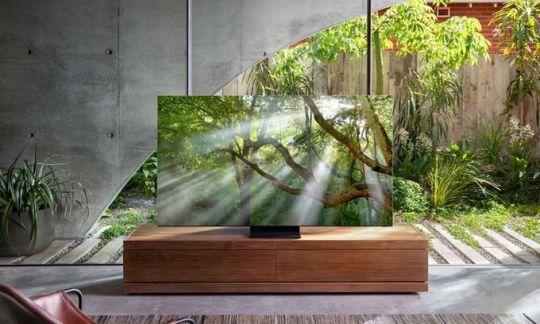
As known, these days companies present their new products at CES 2020. As usual, the attention of experts is primarily attracted by the leaders of the consumer electronics segment, which shape development trends. Of course, Samsung is one of them. The company fully met expectations by presenting three new TVs, including the second generation of Samsung 8K model, innovative MicroLED panels and the experimental The Sero TV. It has a rotary screen for viewing video content in vertical format, for example, from Instagram.
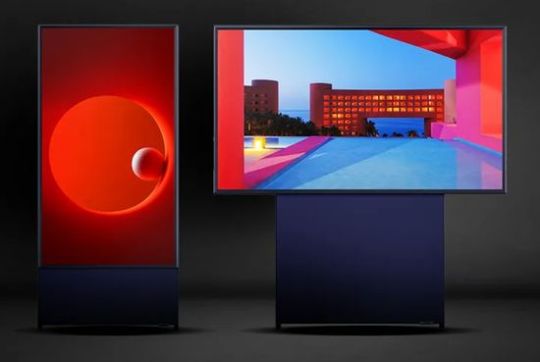
Of course, Samsung Q950TS aroused the greatest interest among experts. In fact, the company created the second generation of its 8K TV.
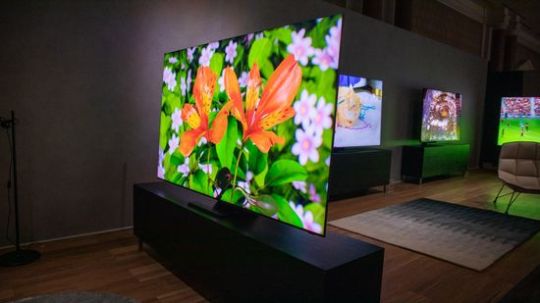
The company demonstrated that the past year was not in vain, embodying a huge number of innovative solutions in the Q950TS. Moreover, this model demonstrated the company's successes in fundamental directions, including 8K AI upscaling based on Deep Learning with neural network and AI ScaleNet technology.
Upscaling
As known, upscaling increases the number of pixels in the original signal to increase the image clarity on the TV screen. This problem arose about 10 years ago when TVs already provided Full HD (1920 x 1080) resolution, and television channels broadcast the signal in HD format (1280 x 720), or SD format (480p, 576i). Of course, this factor significantly reduced the advisability of buying an expensive Full HD TV.
At the first stage, companies successfully solved this problem, showing in advertising or when selling a magnificent image of high-quality video with high resolution. But having bought such a TV, the consumer was quickly disappointed due to the low image quality of low-resolution video from normal traffic. Very quickly, the consumer market realized that even a very expensive TV can provide high quality only when playing high-quality content.
Of course, companies could wait for the required content to appear on the market, but there was a risk. For example, many people remember the rise and sunset of the 3D format in TVs. Even with a large number of fans, today almost all companies have abandoned this option due to the shortage of 3D video content.
As a result, large companies, including Samsung, began to actively develop upscaling technologies for their models, reducing their commercial risks. Indeed, even in the absence of appropriate native content, upscaling provides at least an increase in the quality of available low-resolution content, stimulating the acquisition of expensive model. As a last resort, 8K TV with high-quality upscaling will improve the playback quality of accessible content.
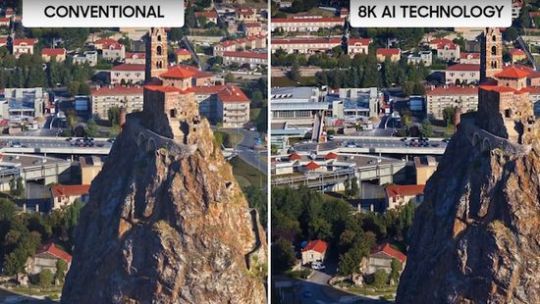
8K AI upscaling with AI Quantum Processor 8K
Physically, upscaling is similar to frame interpolation. As known, in this mode TV creates an additional intermediate frame based on two neighboring frames, ensuring smooth playback of even highly dynamic scenes. Accordingly, upscaling forms additional pixels to increase resolution. For example, the AI 8K Quantum easily scales content to 33,177,600 pixels. Unfortunately, upscaling can distort the original image, forming artifacts. Therefore, this task requires solving many complex problems, including color accuracy, GPU performance for video processing without lags, etc.
As a result, companies developed a lot of upscaling technologies, including Pixel Shift (formation of an additional pixel by shifting), bicubic interpolation (calculation colors by adjacent pixels), etc. Today, AI upscaling is the most promising direction.
The Q950TS confirms Samsung’s leadership in the AI upscaling.
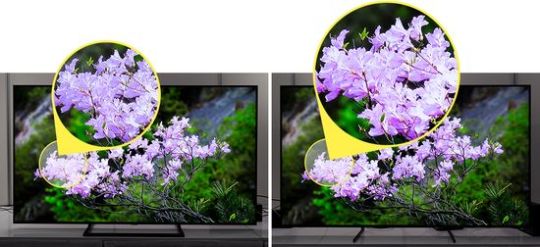
This model uses the latest generation of the AI Quantum Processor 8K, which extends AI upscaling capabilities.
Previously, AI machine learning used a formula bank, which is downloaded to the TV and updated periodically. New Q950TS supports innovative Deep Learning using a neural network to expand machine learning. In fact, it creates its own formulas and algorithms without using a formula bank. Of course, Deep Learning has become a quality leap in AI processing. It is performed on a per-pixel basis with the use of noise reduction, restoration of contours, texture creation and restoration of small details. Deep Learning is primarily intended for small details and complex images.
AI ScaleNet
Of course, transmitting 8K streaming video content requires a significant increase in the bandwidth of communication channels, which depends on the speed of your Internet connection.
To solve this problem, Samsung Research Visual Technology has developed a new AI ScaleNet video codec. As its name implies, the company uses AI to decompress 8K video. In fact, 8K is compressed to 4K using AI-downscaler and transmitted to the user's TV. Then, AI ScaleNet (codec with machine learning elements using different patterns for different image parts) restores 4K to 8K.
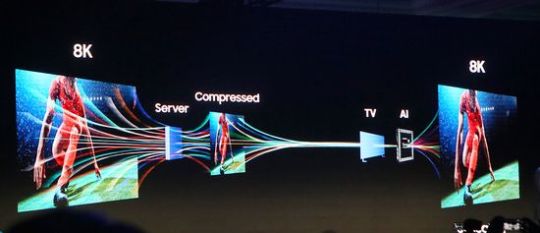
Kwang Pyo Choi, developer of this codec, said that AI ScaleNet uses AI Adaptive Bit Rate Streaming, which provides adjustment depending on the bandwidth of the networks. In fact, the codec adjusts the resolution for smooth video streaming.
In prospect, this technology will provide the required quality of 8K content transfer even at low bandwidth, for example, during periods of heavy network traffic.
Moreover, Samsung has agreed with Amazon Prime Video to jointly test the new technology.
Additionally, the Q950TS supports Google's AV1 (AOMedia Video 1) codec for 8K YouTube content.
Object Tracking Sound Plus (OTS+), Active Voice Amplifier (AVA) and Q Symphony
Apparently, Samsung paid a lot of attention to the object-oriented audio, which lies at the heart of Dolby Atmos and DTS: X. As a result, the new TV has OTS+ (Object Tracking Sound Plus) technology that recognizes moving object inside the scene. After identifying the object, OTS+ moves the corresponding sound track in the direction of its movement using internal speakers. As a result, the sound follows the object. This effect works well, for example, in the scene of a passing car or flying helicopter. TV sequentially switches the speakers, creating a wonderful illusion of the engine sound that moves with the car or helicopter. Maybe Object Tracking Sound Plus is not yet ready to compete with Dolby Atmos, but, of course, it significantly surpasses the traditional 10W down-firing speakers in other flagships.
In addition, the company offers AVA (Active Voice Amplifier) feature that adjusts the volume of dialogs depending on the noise level in the room. For example, when using a blender or vacuum, AVA will automatically increase the volume. But in case of a conversation in the room, the AVA activation requires pressing a passive-aggressive button on the remote control.
Most likely, Q-Symphony technology will appeal to home theater enthusiasts. It combines the speakers in the Samsung TVs of 2020 and Samsung Q800T soundbars into a single audio system, creating a stunning dynamic soundscape. In fact, Q-Symphony creates a 9.1.4 configuration.
Conclusion
Samsung has once again confirmed its innovative leadership. New Samsung Q950TS 8K TV, innovative MicroLED panels and the experimental The Sero TV demonstrated that the company's engineers were able to make significant progress in a year.
The Q950TS 8K TV has embodied almost all of the company's innovative solutions, including 8K AI upscaling with AI Quantum Processor 8K, AI ScaleNet, Object Tracking Sound Plus (OTS+), Active Voice Amplifier (AVA) and Q Symphony. In fact, Q950TS became the best advertisement of the innovative successes of a South Korean company.
Apparently, Samsung Q950TS 8K will compete with Nano99, Nano97 and Nano95 series of LG NanoCell 8K TVs and Sony Z8H 8K.
The video offers a demo of the Q950TS 8K and Sero Vertical TV at CES 2020.
Read the full article
#8KAIUpscaling#ActiveVoiceAmplifier#AIQuantumProcessor8K#AIScaleNet#AOMediaVideo1#AV1codec#bicubicinterpolation#DeepLearningwithneuralnetwork#ObjectTrackingSoundPlus#PixelShift#QSymphony#SamsungQ950TS8K
0 notes
Photo

#hessen #way #forest #green #autumn #rocks #moss #trees #wallpaper #sunthroughtrees #pentaxk1 #pixelshift #stitching #landscapephotography #bsfotomedia #pentaxians #pentax #leaves (hier: Hessen, Germany)
#wallpaper#hessen#green#pixelshift#trees#pentaxians#sunthroughtrees#pentax#moss#landscapephotography#bsfotomedia#leaves#autumn#way#rocks#pentaxk1#forest#stitching
0 notes
Photo

Photo by pixelshifter on Foter.com / CC BY-NC-SA
139 notes
·
View notes
Photo

Common emigrant butterfly pupa Shot with Fujifilm XH2 and XF-30mm #pupa #butterfly #fujifilmxseries #fujifilmglobal #gulfuphotography #naturelovers #butterflyphotography #fujifilmlove #pixelshift #natgeoyourshot #earthpic #grikart_macro #nationalgeographic #mta_macro #smallworld_uc #raw_insects #igbest_macros #macro_vision #macro_spotlight #gf_macro #expertphotography #themacromagic (at Gulfu Photography) https://www.instagram.com/p/CklUIwTPl6d/?igshid=NGJjMDIxMWI=
#pupa#butterfly#fujifilmxseries#fujifilmglobal#gulfuphotography#naturelovers#butterflyphotography#fujifilmlove#pixelshift#natgeoyourshot#earthpic#grikart_macro#nationalgeographic#mta_macro#smallworld_uc#raw_insects#igbest_macros#macro_vision#macro_spotlight#gf_macro#expertphotography#themacromagic
5 notes
·
View notes
Link
youtube
6 notes
·
View notes
Photo

Waldmotive by Lutz Blohm viele Details mit Pixelshift https://flic.kr/p/2iEzi5p
2 notes
·
View notes
Photo

Girl With the Triangle Shapes. . . . #pixelshift #pixelsort #redshift #c4d #cinema4d #otoy #octane #render #3d #digital #art #everyday #graphic #design #digital #howiseedatworld #motiongraphic #fa_hypnotic #rendernation #renderzone #motiondesign #2018 #dazstudio #woman #bodypaint #neon #retro #vaporwave (at Appleton, Wisconsin) https://www.instagram.com/p/Bqr2hKqD0o4/?utm_source=ig_tumblr_share&igshid=r20b1u318m5n
#pixelshift#pixelsort#redshift#c4d#cinema4d#otoy#octane#render#3d#digital#art#everyday#graphic#design#howiseedatworld#motiongraphic#fa_hypnotic#rendernation#renderzone#motiondesign#2018#dazstudio#woman#bodypaint#neon#retro#vaporwave
0 notes
Photo

As Winter comes ... Autumn leaves #imaginarylandscape #autumnleaves #cityview #cityscape #pixelshift #onthemove #dreamcatcher #promenada #skytower (at Promenada) https://www.instagram.com/p/BqWfVulFfM_/?utm_source=ig_tumblr_share&igshid=1b5ikbdlh0yj7
#imaginarylandscape#autumnleaves#cityview#cityscape#pixelshift#onthemove#dreamcatcher#promenada#skytower
0 notes
Photo

Warrenville Grove
0 notes
Text
AMOLED display phones Review
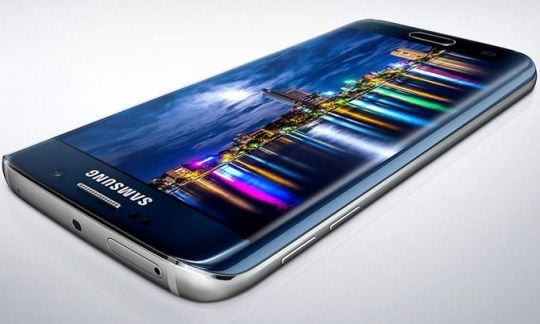
Of course, a modern smartphone is one of the most complex electronic devices that uses a large number of complex components. Their technical characteristics directly affect the functionality and, as a result, the choice of the optimal model. This list includes the number and set of cameras in multi-camera smartphones and specs on main camera, smartphone performance and smartphone storage, operation system, etc.
Of course, the display is one of the main components. But its specs, service life and safety for vision depend on the matrix type. All modern TVs and smartphones use AMOLED (Active Matrix Organic Light-Emitting Diode) or LCD screens.
As known, the first light-emitting p-phenylene vinylene (or PPV, or polyphenylene vinylene) polymer was synthesized in the Cavendish Laboratory of the University of Cambridge in 1989. Already in 1992, Cambridge Display Technolodgy (CDT) was established to produce polymer light-emitting materials.
In 2004, Samsung introduced the first X120 phone with an OLED screen.
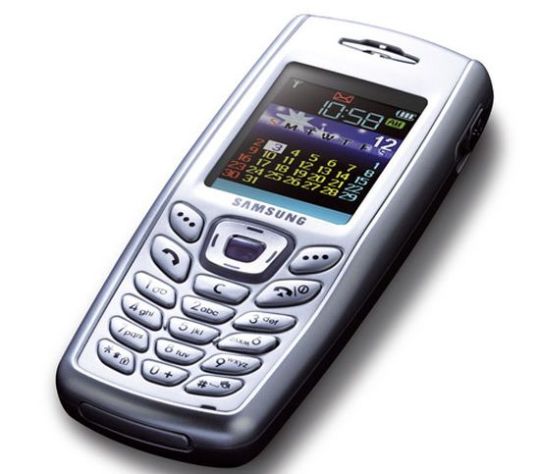
In August 2008, Nokia introduced the N85 with an AMOLED display.

As known, OLED matrices (Organic light-emitting diode) use multilayer organic polymers that emit light under the influence of an electric current. Accordingly, they do not require backlighting. This factor is their main difference from traditional LCD technology. Today, all companies use OLED matrices with Active Matrix only and are called AMOLED (Active Matrix Organic light-emitting diode). In the TVs segment, companies continue to use OLED abbreviation without adding AM.
Pros & Cons
Pros
- perfect black due to lack of backlight provides almost endless contrast (2,000,000: 1 and above);
- large viewing angles eliminate color distortion even when viewing at an angle;
- PWM (pulse-width modulation) provides a wide range of brightness and very accurate color reproduction;
- smaller dimensions and weight;
- instant response due to lack of inertia;
- the ability to create flexible screens;
- wide range of operating temperatures from −40 to +70°C.
Cons
- high price;
- screen flicker due to PWM increases eye strain;
- low maximum brightness;
- high sensitivity to moisture;
- slight purple hue due to the eye’s reaction to the blue subpixels.
- the limited service life of the blue phosphor due to its chemical characteristics violates the color balance after several years.
The service life of green diodes reaches 130,000 hours, red - 50,000 hours, blue - only 15,000 hours. Of course, this problem significantly reduces the competitiveness of AMOLED vs LCD.
PenTile, Pixel Shifting and parallax backgrounds
Today, companies use several basic ways to solve this problem.
PenTile (penta + tile) technology integrates a family of proprietary sub-pixel configurations in electronic displays. It was developed in the early 1990s. This method uses the placement in a staggered manner of the five subpixels in each pixel, including two red, two green, and one central blue.
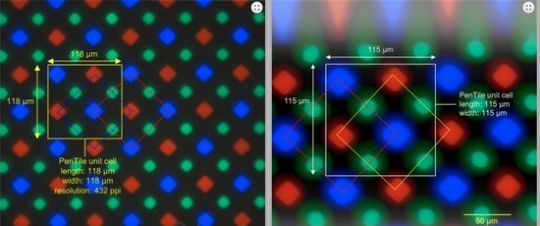
It is based on the characteristics of the retina of the human eye, which contains S (short)-cones, M (medium)-cones and L (long)-cones. Wherein, the number of S-cones significantly exceeds the number of M and L-cones. As known, S-cones provide recognition of blue color. Moreover, blue color almost does not affect the perception of brightness.
In March 2008, Samsung Electronics acquired PenTile from Clairvoyante and funded Nouvoyance, Inc. to continue developing this technology.
Technologically, PenTile adds subpixels to the device matrix. Modern smartphones use RGBG (additional green sub-pixel) or RGBW (additional white sub-pixel).
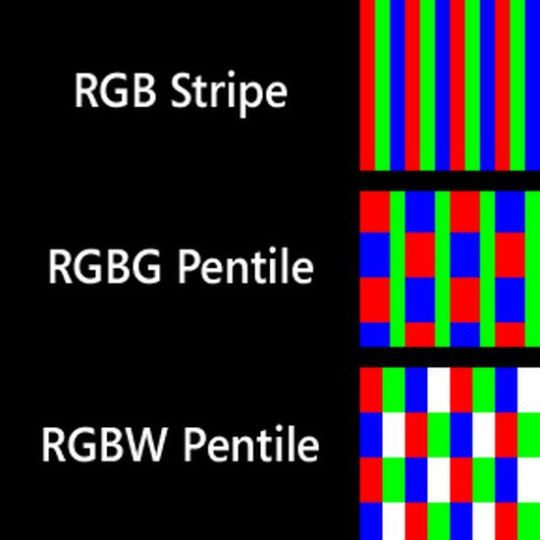
RGBG provides provides constant brightness while reducing the number of subpixels by 1/3 due to the high perception of green by the human eye. Today AMOLED, Super AMOLED and Super AMOLED HD often use this configuration.
RGBW increases brightness without increasing power consumption and is commonly used in LTPS matrices.
PenTile technology allowed Samsung to use half as many blue and red subpixels compared to green. Moreover, the most powerful blue diodes operate at half power, saving a resource. It increases their service life, and all subpixels burn out evenly.
Pixel Shifting software algorithm shifts the image by 1 pixel for a prolonged static image.
Recently, Google and Apple often use parallax backgrounds, preventing a static image on the screen.

AMOLED technology
Like LCD, AMOLED matrices use TFT technology. Each pixel uses its own transistor and capacitor for control. AMOLED technology has no size restrictions and is used for 10-inch screens and more.
Super AMOLED is an improved version of AMOLED. They do not have an air gap between the touch layer of the screen and the matrix. In this case, the engineers integrated the sensor layer directly into the screen instead of its surface.
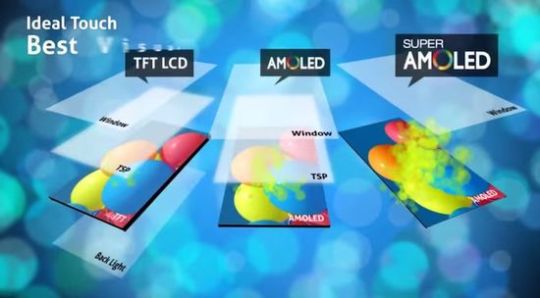
As a result, these screens are thinner, have less power consumption, provide absolute dust protection, a wider saturation of colors and a better image in direct sunlight. Unfortunately, they are more expensive compared to traditional AMOLED screens, and have high image grain due to the use of PenTile RGBG.
A similar technology in IPS matrices is called OGS (One Glass Solution).
Super AMOLED Plus and HD Super AMOLED differ only in the number of sub-pixels and, accordingly, size.

P-OLED matrices use a plastic screen backing instead of a glass. In addition to the traditional pros of OLED technology, this solution provides several additional advantages, including the ability to change the form factor of screens (flexible displays).
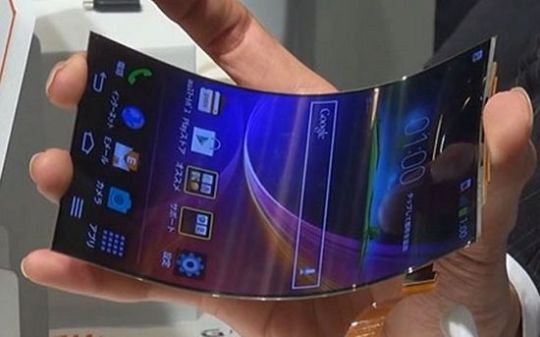
Samsung's latest Dynamic AMOLED version in Galaxy S10 5G is Super AMOLED with HDR10 support.
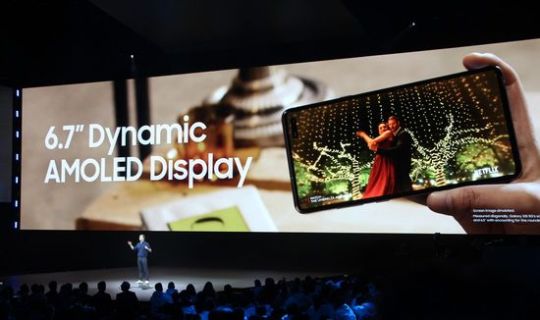
In addition, they form a less intense blue, which reduces eye strain and increases screen life.
Conclusion
In general, we can state the rapid development of AMOLED technology. Despite the higher price, AMOLED successfully competes with LCD displays, including Retina. Apparently, Samsung will continue to lead in this segment. But its success will significantly depend on the pricing strategy. In comparison, LG, the leader in the OLED TVs segment, has already offered the gorgeous 65-inch LG OLED C9 PUA for less than $ 2,500, which seemed unrealistic just a couple of years ago. It can be assumed that Samsung will also make efforts to lower the price of AMOLED screens.
This video shows a comparison of the iPhone 7+ with Retina LCD Display vs Samsung Galaxy S7 with Super Amoled.
Read the full article
#ActiveMatrixOrganiclight-emittingdiode#AMOLED#AMOLEDdisplayphones#dynamicAMOLED#GalaxyS105G#HDSuperAMOLED#OGS#OneGlassSolution#P-OLED#parallaxbackgrounds#PenTile#pixelshifting#RGBG#RGBW#superAMOLED
0 notes
Photo

Baker Street Pixel shift by davidabbs https://ift.tt/2pVdqAb
0 notes